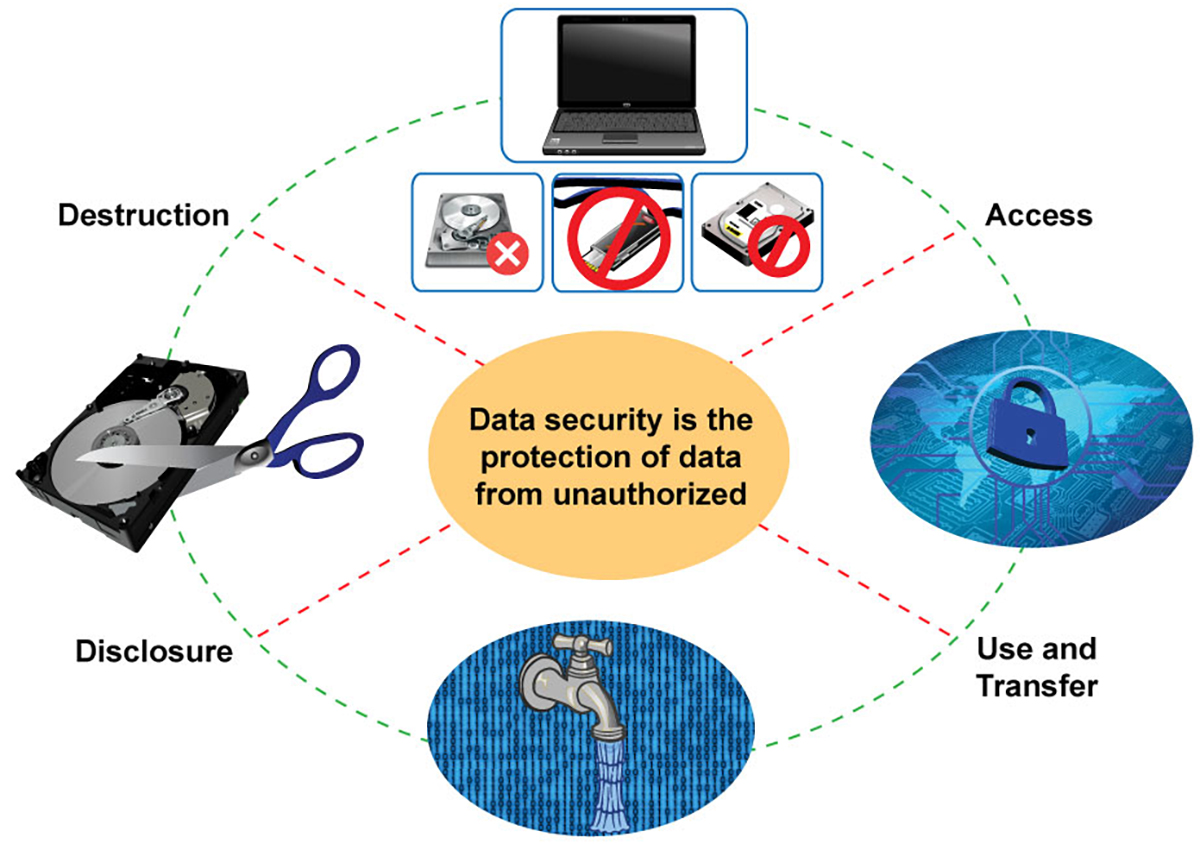The Relevance of Effective Information Destruction Practices in Safeguarding Sensitive Details and Ensuring Computer Safety
In a period where data breaches are increasingly usual, the relevance of reliable information damage practices can not be overstated. Applying durable data destruction approaches not only reduces these dangers yet likewise aligns with legal conformity requirements, guaranteeing that organizations maintain their track record and foster client trust fund.
Comprehending Information Damage
Comprehending data devastation is vital in today's digital landscape, where delicate info can quickly be endangered. Reliable information devastation entails not merely deleting files yet making certain that data is irretrievable via detailed approaches. This procedure is important for companies that deal with private client details, intellectual property, or interior papers, as any violation can result in severe economic and reputational consequences.
Information devastation includes numerous strategies, consisting of shredding physical media, degaussing magnetic storage space tools, and utilizing software-based remedies that overwrite information multiple times. Each technique serves a specific function and has to align with the level of sensitivity of the info being thrown away. Physical destruction is commonly chosen for hard drives consisting of extremely private information, while software application approaches could be adequate for less delicate info.
Moreover, adhering to sector requirements and laws, such as the General Information Security Policy (GDPR) or the Health Insurance Portability and Liability Act (HIPAA), is imperative for compliance and to reduce lawful dangers. Organizations has to develop a durable information devastation plan, train workers on finest methods, and consistently audit their treatments to make sure that all delicate information is gotten rid of securely and successfully.
Risks of Inadequate Practices
Inadequate data damage practices reveal companies to substantial threats that can have far-reaching repercussions. When sensitive info is not correctly thrown away, it remains at risk to unapproved gain access to, which can bring about information breaches and identification burglary. Such occurrences not just compromise the safety and security of people but likewise tarnish the company's reputation, resulting in a loss of client trust and potential financial repercussions.
Furthermore, regulatory conformity is increasingly rigid in many sectors. Failing to abide by information devastation regulations can lead to significant fines and lawsuits against organizations. These fines can draw away and strain monetary sources attention from core company procedures.
Additionally, the abuse of recurring information can lead to intellectual residential or commercial property theft or corporate reconnaissance, threatening competitive benefits (data destruction). The influence of inadequate data devastation prolongs beyond immediate financial losses; it can additionally cause long-term damages to brand integrity and market placement

Organizations should identify that information safety is not solely concerning stopping breaches; it also encompasses the liable administration of information throughout its lifecycle. Neglecting reliable information damage protocols can have disastrous implications, underscoring the need for durable actions to mitigate these risks.
Finest Practices for Information Destruction
Applying effective data destruction techniques is crucial for securing delicate info and keeping compliance with regulatory criteria. Organizations needs to embrace a multi-faceted technique to make sure that information is irretrievable, therefore stopping unauthorized gain access to and prospective breaches.
First, data should be classified based on sensitivity, enabling companies to use ideal destruction techniques tailored to the level of risk. For electronic information, utilizing software-based data-wiping devices that abide by market criteria can properly overwrite existing information. Physical devastation techniques, such as shredding or degaussing, are essential for gadgets that keep delicate information, ensuring total eradication.
Establishing a clear information retention plan is vital, detailing the length of time different kinds of info should be maintained before damage. Normal audits of information storage space systems are additionally needed to recognize obsolete or unneeded information requiring elimination.
Additionally, training workers on the importance of data damage and the certain methods to comply with fosters a society of security within the company. Ultimately, keeping documents of information destruction processes gives liability and sustains compliance with inner policies and exterior laws. By adhering to these finest techniques, organizations can significantly reduce the dangers connected with data exposure.
Legal and Conformity Considerations

Failing to conform with these more helpful hints laws can lead to extreme penalties, consisting of substantial fines and reputational damages. Organizations should apply a robust information destruction policy that straightens with these lawful frameworks and supplies clear standards on the proper approaches of data disposal, whether physical shredding or electronic cleaning.
Furthermore, preserving documents of data damage tasks is crucial for demonstrating compliance throughout audits or inspections. By focusing on lawful and conformity considerations, organizations can improve their information protection position and foster depend on with stakeholders and customers, ultimately contributing to a more safe and secure data management atmosphere.
Advantages of Effective Information Devastation
Reliable information devastation methods expand past plain compliance; they offer significant advantages to organizations that prioritize them. By making sure that sensitive info is irretrievably ruined, companies mitigate the danger of information violations and the potential financial repercussions related to them. This proactive approach not only safeguards against unapproved access but also enhances the overall credibility of the organization in the eyes of clients and stakeholders.
Implementing durable information damage methods, such as physical damage of storage devices or advanced data wiping strategies, adds to the fortifying of a company's cybersecurity pose. data destruction. It lowers the chance of intellectual residential or commercial property theft and safeguards proprietary information, therefore keeping an one-upmanship out there

Conclusion
In final thought, efficient data destruction practices are essential for safeguarding sensitive details and boosting general computer safety and security. Ultimately, a dedication to durable information damage strategies fosters a society of duty, consequently enhancing an organization's cybersecurity stance and keeping customer count on.

Comments on “Recognizing the Function of Data Destruction in Conditioning Cyber Security Defenses”